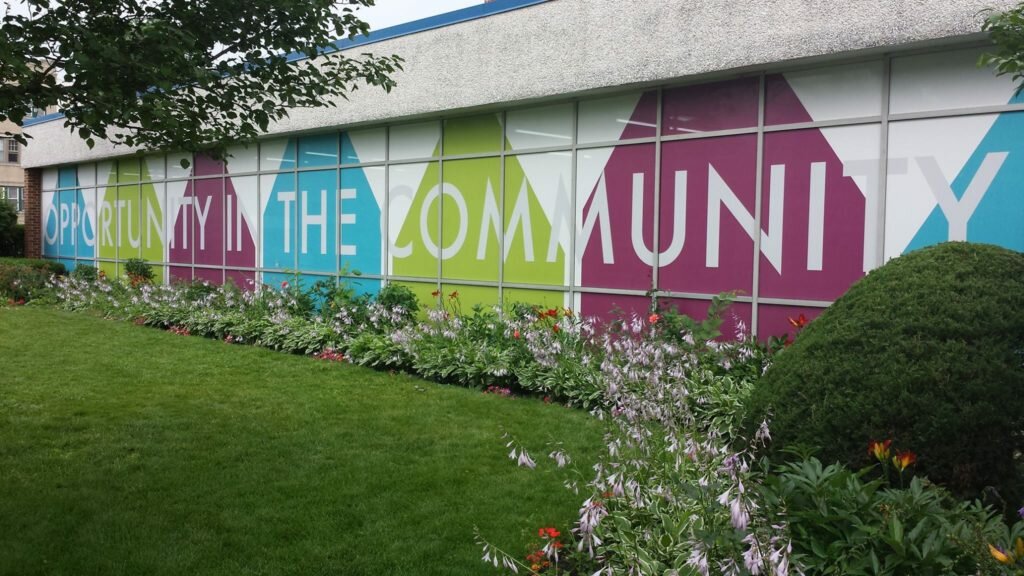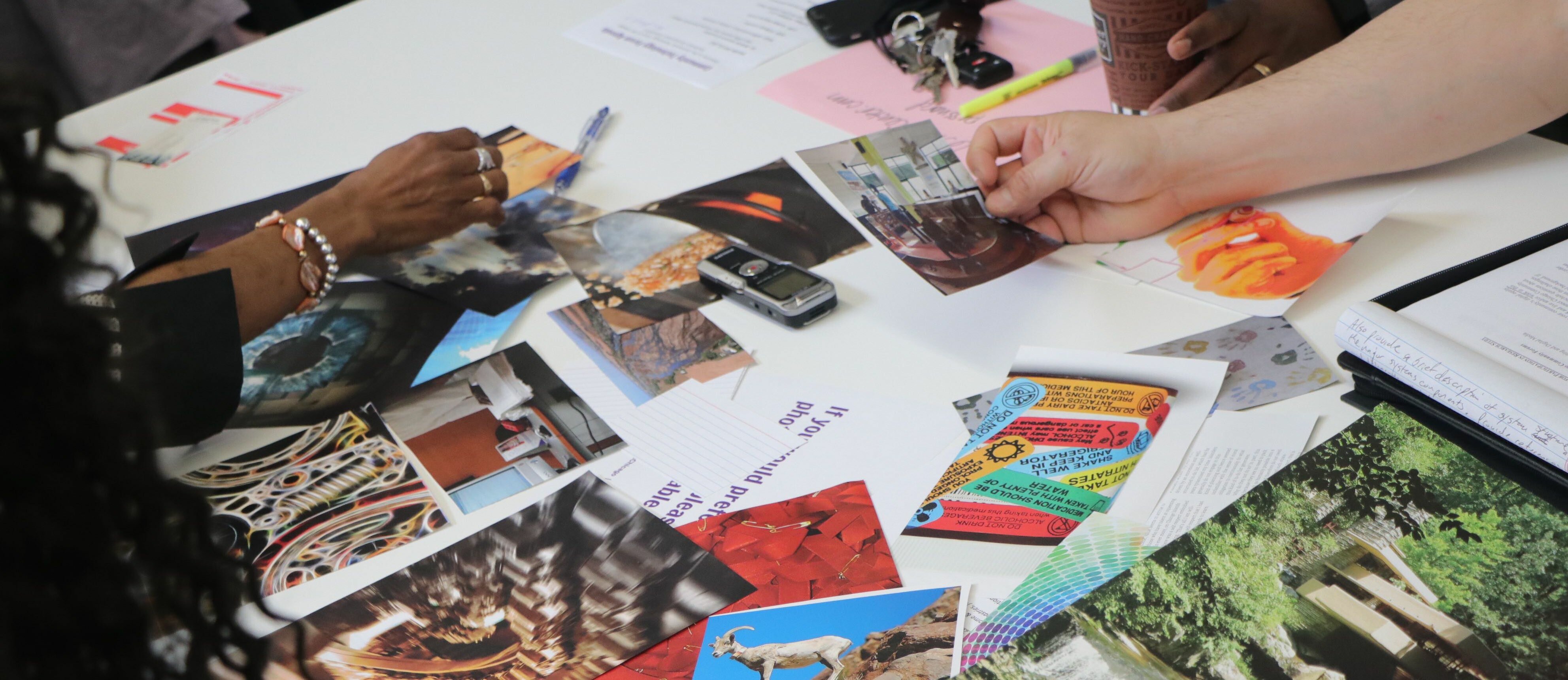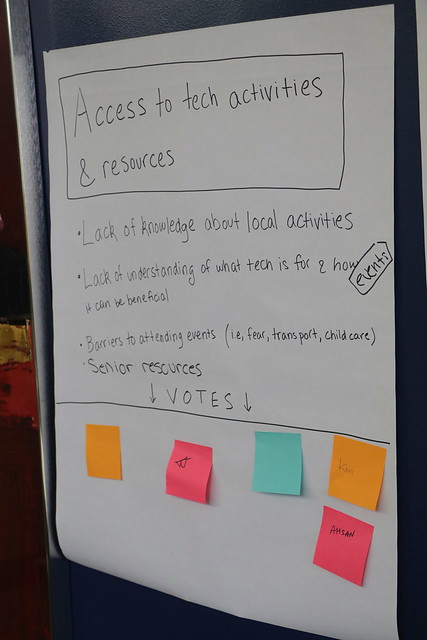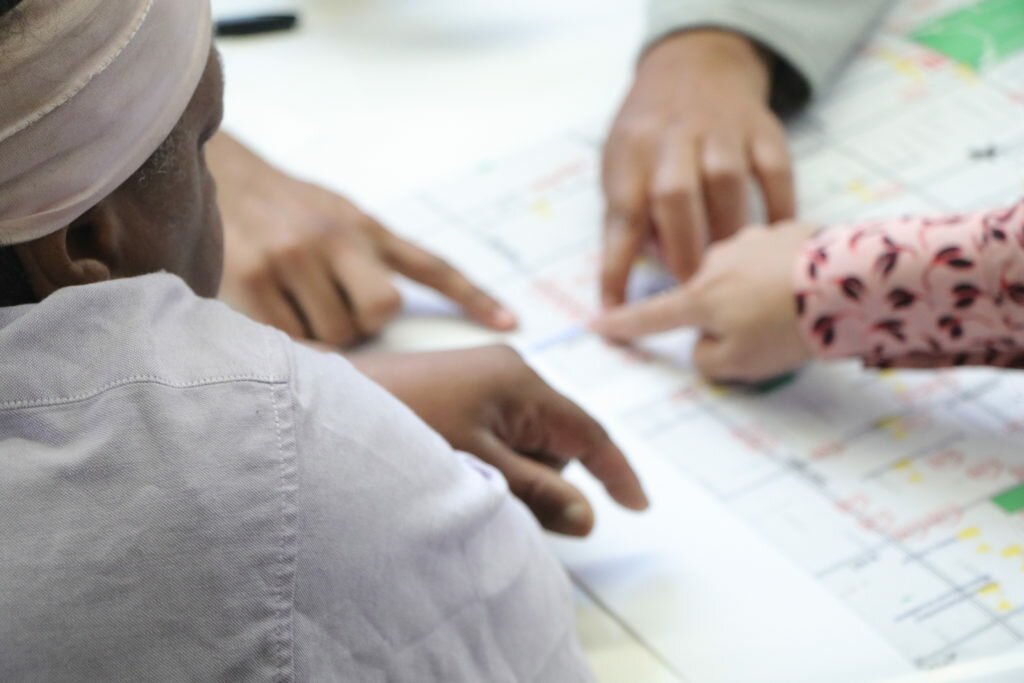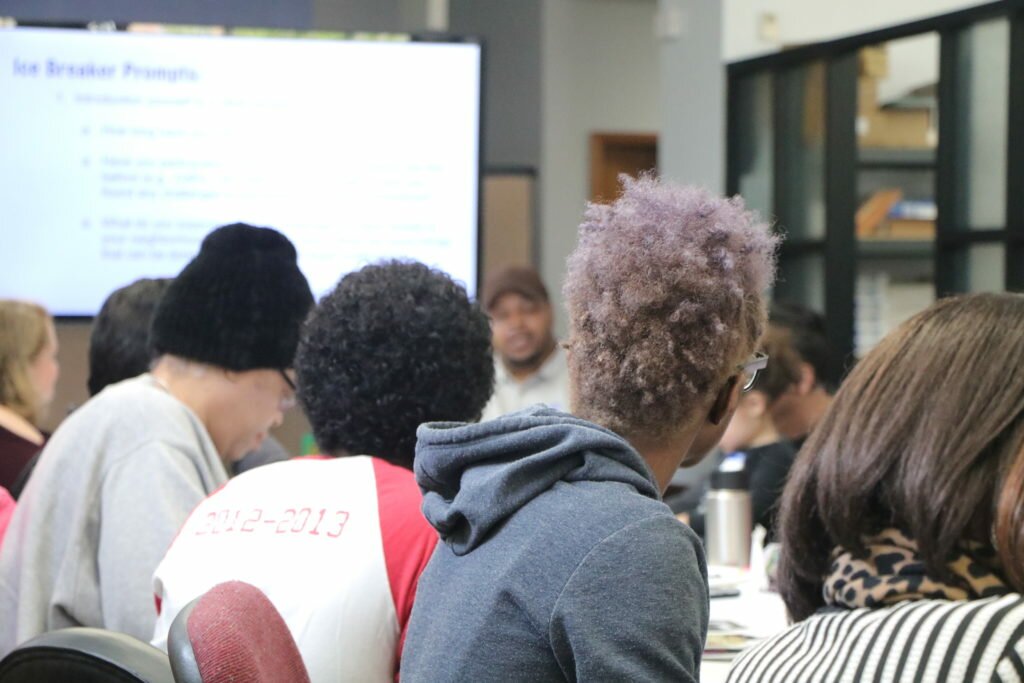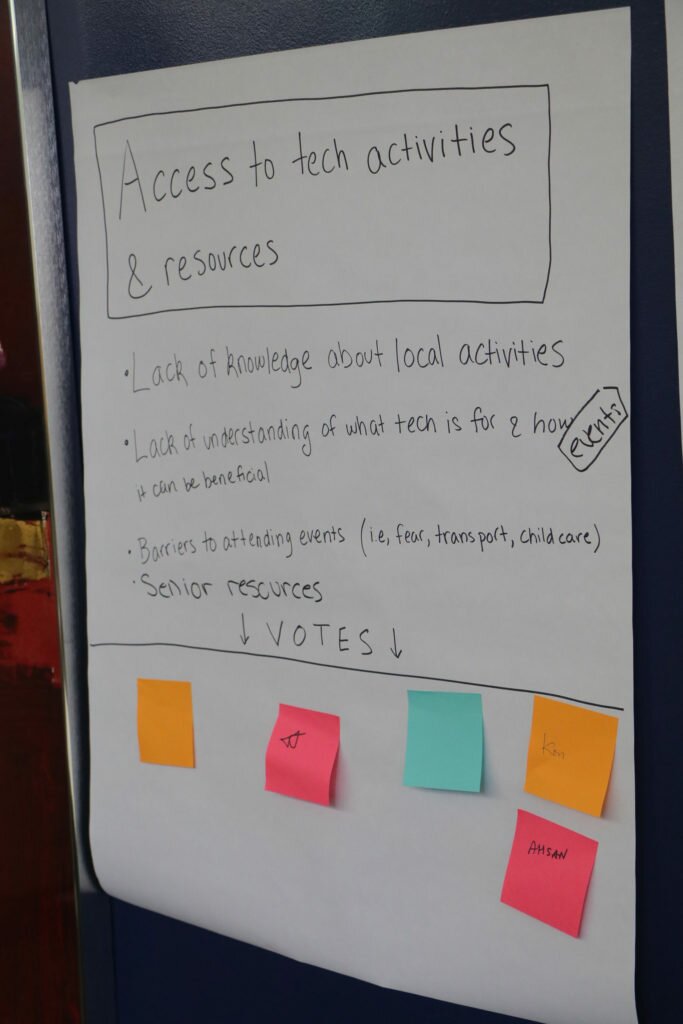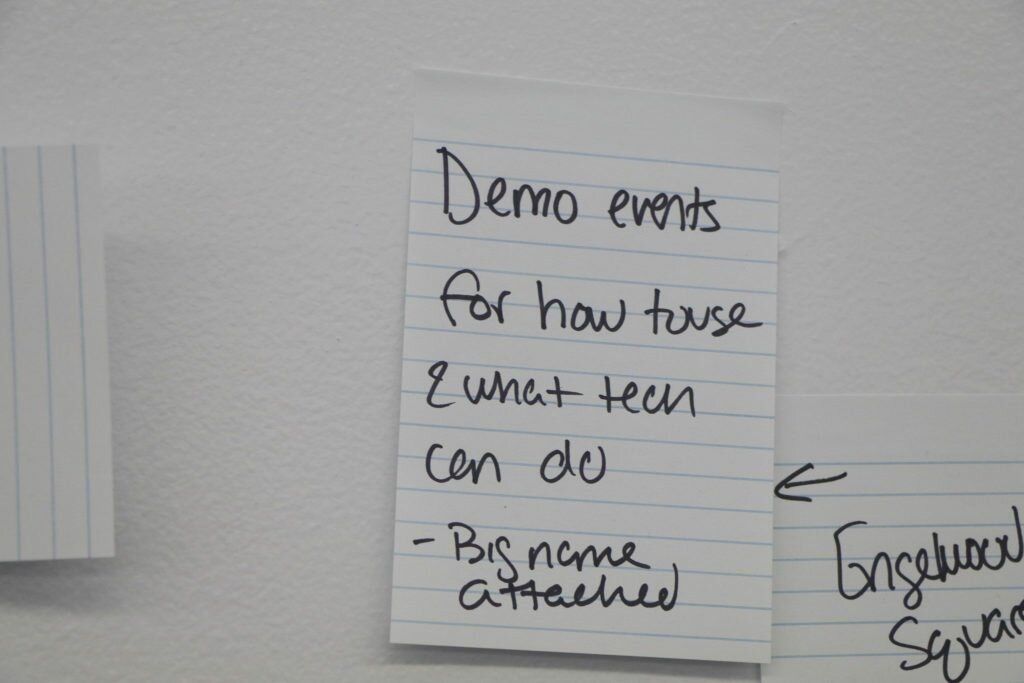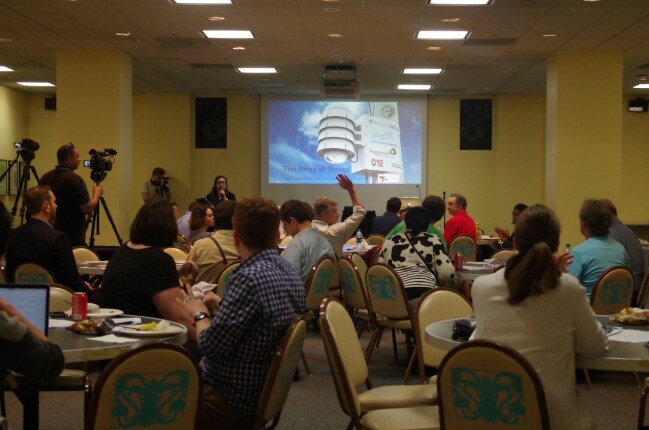This blog post was originally published on Data-Smart City Solutions and is by Glynis Startz — Smart Chicago’s Harvard Ash Center Summer Fellow. Glynis is assisting with Smart Chicago’s Array of Things Civic Engagement work, among other smart cities-focused projects. Glynis is a Master in Public Policy Candidate at the Harvard Kennedy School.
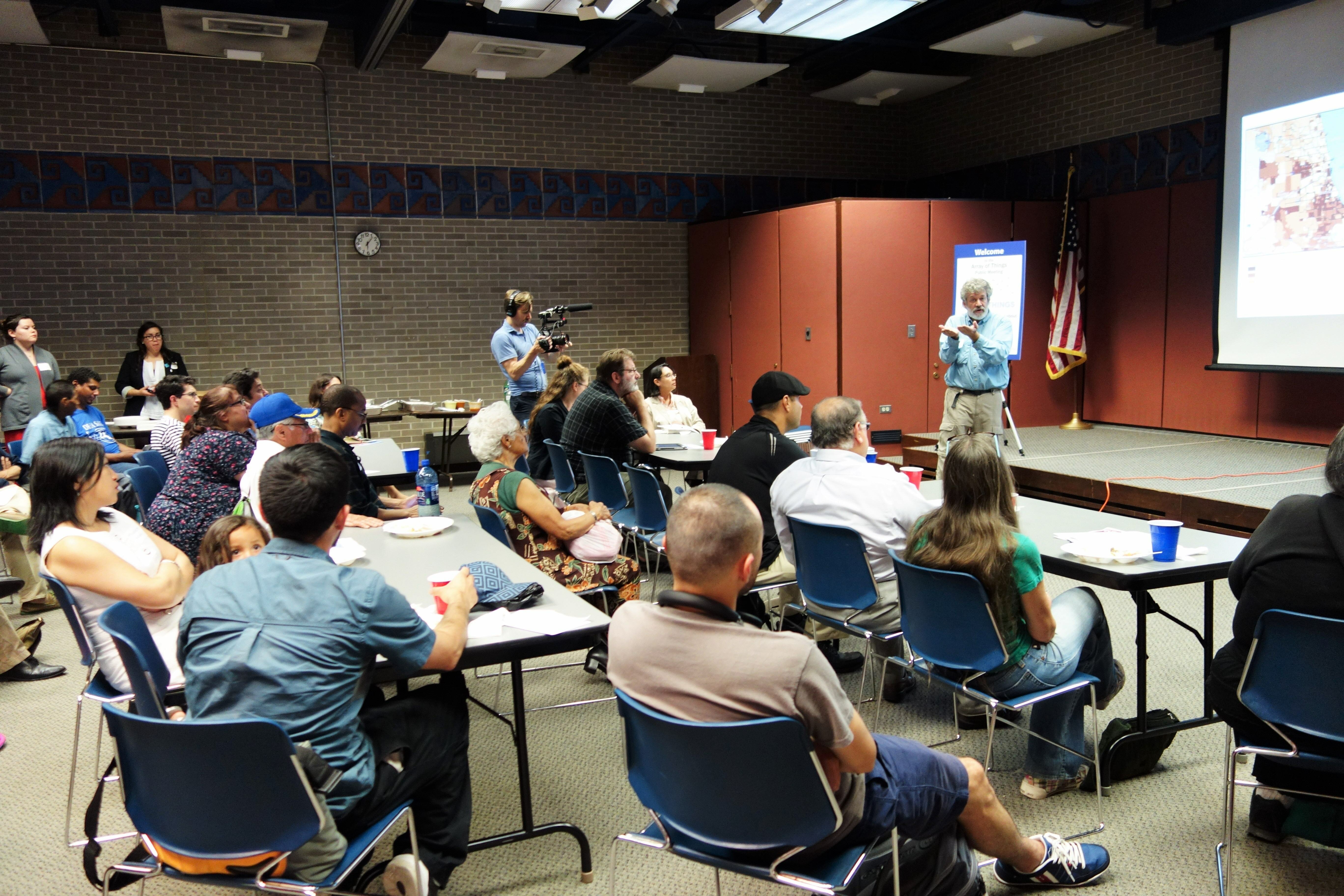
The Array of Things Public Meeting at Lozano Public Library | June 14, 2016
This summer the Smart Chicago Collaborative is working with the City of Chicago and the operators of the Array of Things urban sensing project to engage with residents broadly and gather feedback on the project’s Governance and Privacy Policy. This project was recently mentioned in an article by Stephen Goldsmith about implementing Internet of Things (IoT) initiatives. In it, he recommended that cities consider five key themes:
- Leverage existing physical infrastructure
- Engage the local data ecosystem (ie partner with local researchers or non-profits)
- Employ a clear data management strategy
- Address security and privacy concerns with transparency
- Turn collected data into action
These five points are important technical aspects of a successful IoT initiative, but it’s also important to consider non-technical themes of IoT work. One less highlighted theme vital to IoT reaching it’s full potential in a city: engaging residents early and often.
Engaging with residents to see what they need, and designing projects that reflect that feedback, is necessary and useful. Effective engagement can provide valuable information to improve the implementation of an IoT project, in addition to easing resident objections or concerns.
Why Engagement Matters for Everyone
Engaging with residents is traditionally thought of as a way to gather and maintain local support for a project, but it can also enable implementers to take advantage of unknown neighborhood (institutional) knowledge to make a project more effective. We often see transparency and engagement as a chore–a political requirement instead of something which has more direct and functional value.
Governmental or academic implementers sometimes underestimate residents and their genuine interest in innovative projects. There is a tendency to assume residents don’t want to engage in the complexities of a problem, and that it is therefore better for the project heads to go ahead and do what they’ve determined is right, but this undersells the commitment and sophistication of many citizens. Because IoT applications almost always touch on data and sensors, engagement involves privacy issues and can seem particularly scary. There are a few predictable reactions to open discussion of these issues which can put anyone off having that talk, but it’s a mistake to assume you know how the majority of residents will react.
A good example of this is the discussion that was reported around an IoT transportation project in Aberdeen. Researchers were concerned about data anonymity because of the low population of the project area, but when residents were brought into the discussion they felt the utility they gained from the project (improved tracking of bus arrival times) made that cost worthwhile.
Learning from Engaging
With that underestimation comes an undervaluing of the feedback residents can provide. There are vast reservoirs of relatively untapped institutional knowledge about neighborhoods or cities in residents’ minds. The more feedback you open yourself up to, and the more time you spend answering questions and listening, the more useful information you can gather. Sometimes you’ll learn things you didn’t know you didn’t know.
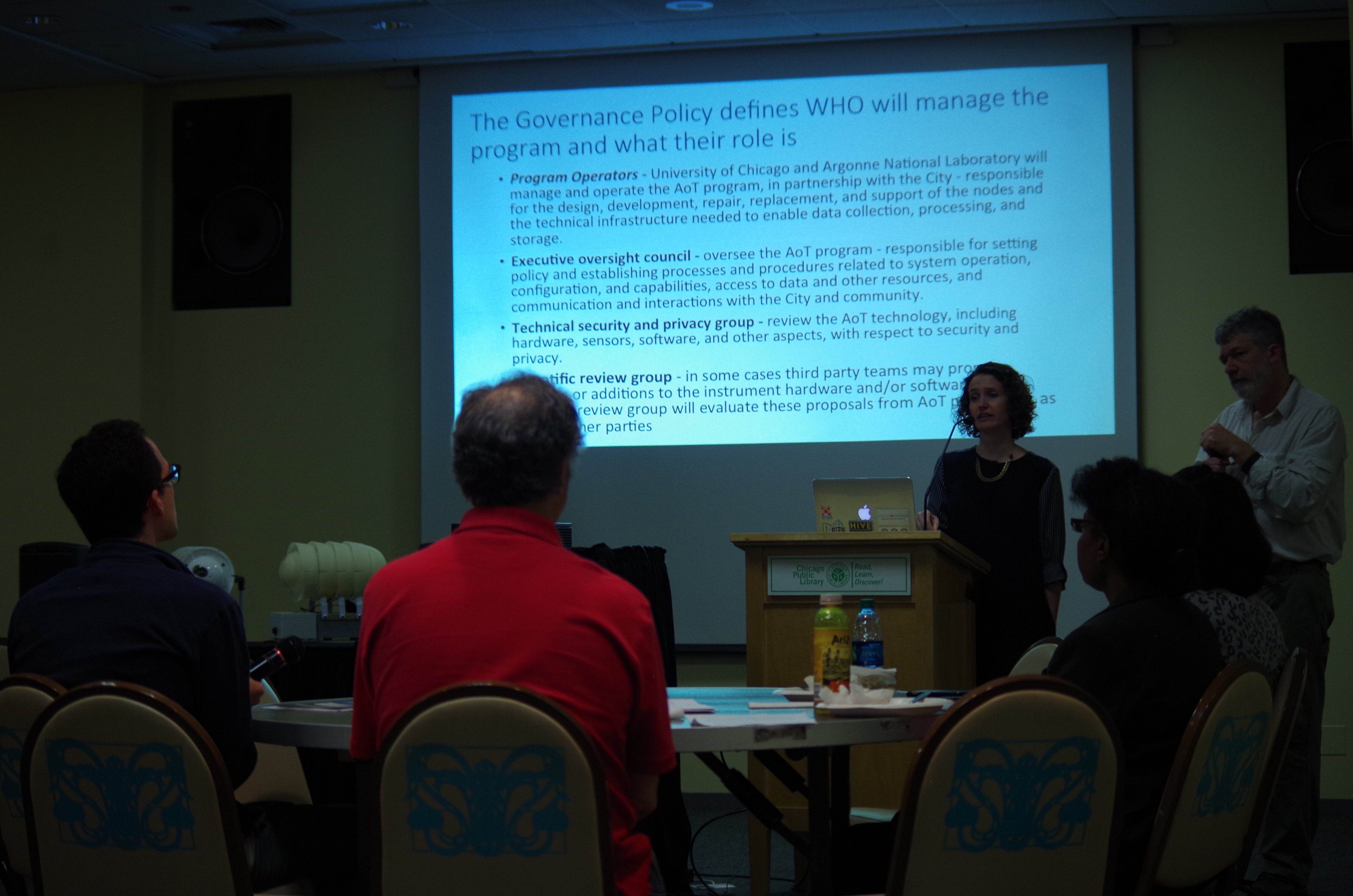
Brenna Berman and Charlie Catlett overview the Array of Things governance & privacy policies at a public meeting | June 22, 2016
The importance of engaging residents around civic technology more generally is something the Smart Chicago Collaborative has been grappling with for several years. The Civic User Testing Group (CUTGroup), a community of residents in Chicago and all of Cook County who get paid to test out civic websites and apps, is one example of direct resident engagement with technology tools. Smart Chicago’s Array of Things Civic Engagement work could be considered an extension of that purpose — directly engaging Chicago residents in shaping technology projects and policies, rather than a tool. By acknowledging that there are some things best learnt from residents and users, these initiatives use civic engagement to improve technology and service delivery in Chicago.
Engagement around the Array of Things project recognizes the potential value of that input. In addition to gathering feedback about privacy concerns, events were a chance for residents to air concerns and ask clarifying questions about data, privacy, and governance, but they also became a forum for researchers to learn what new information residents could provide about their environment, and increase their involvement. Researchers would do well to follow up and continue to learn.
The engagement meeting referenced the historical and contextual knowledge of the area residents could provide, and which researchers may want to draw on when choosing sensor locations. For example, Charlie Catlett told attendees at the Lozano Library Public Meeting that they could influence the exact placement of sensors if there were reasons the Array of Things team didn’t know about or hadn’t thought of. Residents of every neighborhood are likely to have superior information about precisely where various aspects of their ecosystem can best be evaluated.
Engage or Inform
When we’re talking about civic engagement, it’s very important not to confuse informing with engaging. Helping residents understand the project is different from, but a necessary precursor to, collecting targeted feedback about the project and what aspects are useful or not to residents. If a project isn’t willing to be responsive to that feedback, they are informing, not engaging.
I think interaction with citizens in the data and open government sector can be split into three levels. The first level is technical transparency. This is creating an open data portal or putting the text of some policy up online. Technical transparency allows an organization to say they are being open without actively reaching out to citizens. The second level is informing–explaining to citizens what you’re doing while you’re doing it. This goes further than technical transparency in that it requires at least some attempt to curate open information for citizens, but it doesn’t require an explicit feedback loop. The third level is engagement, taking the time not only to inform residents, but to listen to and react to their questions, concerns, and desires. Engagement is the hardest to do well, and the most time consuming, but it can also provide the most value added for everyone involved.
A city or project should decide which of the three levels of interaction is appropriate and manageable. This may depend on the magnitude of privacy concerns or likely impacts on residents, on the potential malleability of the project, and on whether the design of the project makes local knowledge potentially valuable. For some IoT implementations, especially ones testing specific hypotheses, some aspects of the project may not be open to change. To measure the lake effect, for instance, Array of Things may need sensors set up in a certain formation. Sometimes simple informing is ok, and sometimes it’s not.
To capture the full value of the IoT, cities must not only “integrate it into existing data strategies” as Goldsmith points out, but integrate it into the existing social and cultural structures as well.

A resident snaps a picture of an Array of Things sensor at a public meeting | June 22, 2016


